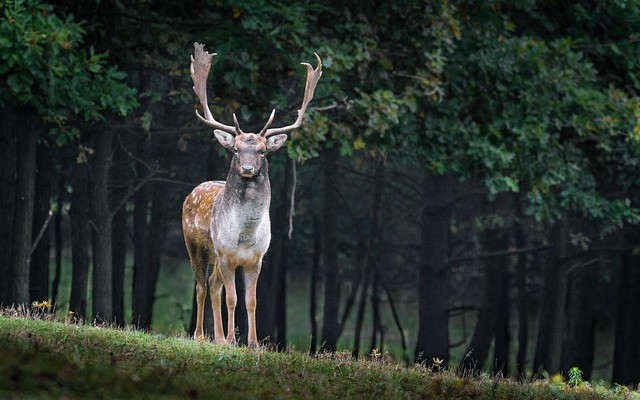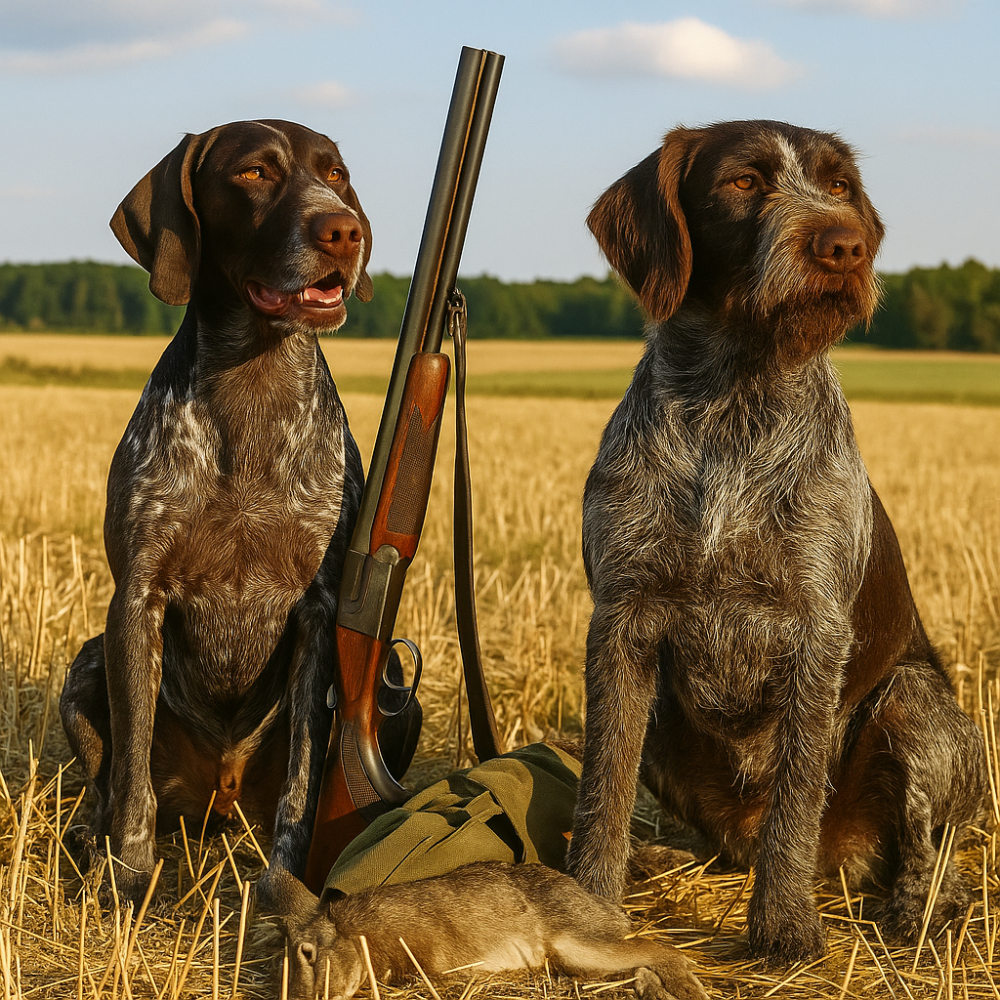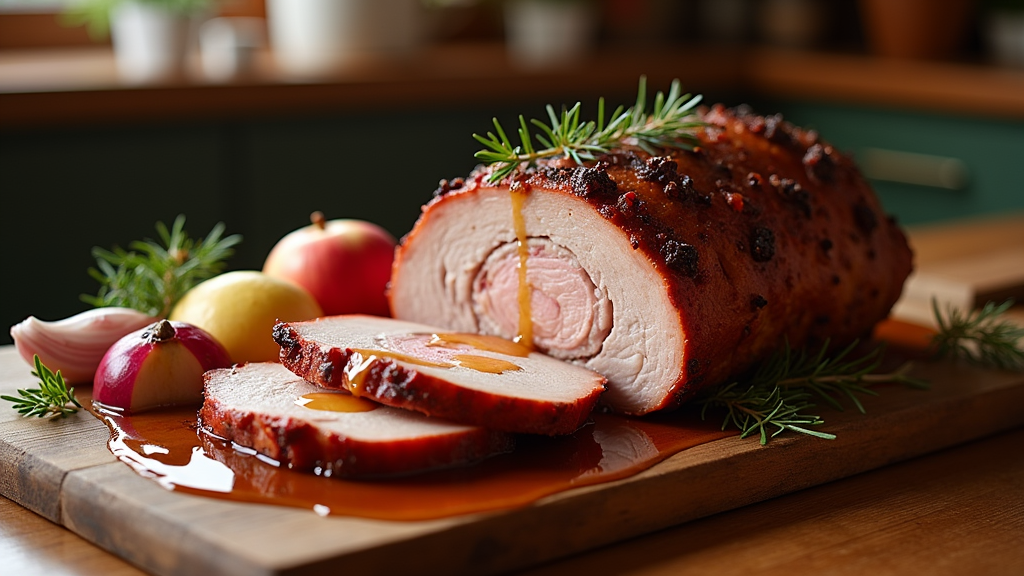Are you an outdoor lover? Seeking a thrilling hunt? Fallow deer hunting is the perfect pick! Enjoy an unforgettable experience, and help sustain healthy ecosystems. The adrenaline of the hunt will stay with you for a long time!
Introduction to Fallow Deer Hunting
Fallow deer hunting is an exhilarating and difficult sport. It demands skill, knowledge, and patience. It offers hunters a connecting point with nature and the thrill of chasing these majestic animals. Fallow deer are prized trophies for many hunters – with their unique antlers and graceful movements.
To have a successful hunting expedition, it’s important to know the behavior and habitat of fallow deer. They can be found in woodlands and open fields. Most active at dawn or dusk when they come out to feed, so plan trips accordingly to spot them.
When it comes to hunting tactics, there are different approaches. Stalking is walking silently through the terrain, using natural cover to get closer to the deer. Stand hunting is waiting in a stationary spot near known feeding or bedding areas.
Remember to check local regulations and obtain permits before hunting. Regulations can differ depending on the location and season, so stay informed and obey the law.
Safety first! Wear suitable clothing, use firearms responsibly, and be respectful of the environment and other hunters. Have a happy hunting experience!
The Best Times to Hunt Fallow Deer

Hunting fallow deer can be a thrilling experience. Knowing the best times to hunt them is key. Understanding their habits and movement patterns will help you catch them.
Here’s a table with advice on when to hunt them:
| Season | Time | Weather |
|---|---|---|
| Spring | Early morning or late afternoon | Mild, clear skies |
| Summer | Early morning or late evening | Cool, minimal rain |
| Autumn | Early morning or late evening | Crisp, calm winds |
| Winter | Late morning or early afternoon | Warmer, sunny |
Note that fallow deer are usually active at dawn and dusk. This provides them with just the right amount of light and cover.
Also consider other factors like their rutting season and feeding patterns. During breeding season (autumn), they become more vocal and territorial, making them more responsive to calls and lures.
Fallow deer prefer cooler temperatures for feeding. Pay attention to weather that encourages feeding, like mild temps in spring or crisp temps in autumn. Get hunting and good luck!
The Best Places to Hunt Fallow Deer
For those seeking a thrilling fallow deer hunt, there are many prime locations around the world. Scotland, New Zealand, Germany, Australia, the US, and Hungary all offer unique experiences. For a truly different adventure, head to France or Argentina.
One memorable hunt took place in Scotland. The wind and excitement rushed through me as I made my way through the misty hills. Suddenly, a majestic fallow deer leapt through the ferns – and the pursuit began. After an intense chase, I harvested it successfully – a memory that will stay with me forever.
Whenever you hunt, remember to respect nature and abide by the laws. Enjoy your journey and seek out these amazing creatures in their beautiful habitats!
The Best Methods for Hunting Fallow Deer

Fallow deer hunting needs great skill and knowledge. To do it well, hunters must use the best methods and techniques. Here’s some good strategies for hunting fallow deer.
- Stalking: Move through their habitat quietly to get into shooting range.
- Ambush: Set an ambush in areas they visit often, like feeding grounds or travel routes.
- Calling: Use calls to imitate their vocalizations and attract them.
- High seat: Hunt from an elevated spot for better visibility.
It’s important to remember that laws may affect fallow deer hunting. Check local laws before going hunting.
John, an experienced hunter, tells a success story about stalking. For months, he studied their behavior and improved his stalking skills. One morning, after a lot of effort, he got close enough for a clean shot and harvested an impressive trophy buck. His dedication and patience worked, showing that mastering the art of stalking can lead to success in fallow deer hunting.
Hunting fallow deer needs accuracy, flexibility, and respect for nature. With these methods and stories like John’s, hunters can get better and help conserve this amazing species.
The Benefits of Hunting Fallow Deer
Hunting Fallow Deer is an exciting activity for outdoor enthusiasts. It provides sustenance, helps regulate their population, and aids in preserving a balanced ecosystem. Plus, it’s an adventurous experience for hunters, offering a chance to test their skills and connect with nature.
Fallow deer hunting contributes to conservation by supporting local wildlife management programs. It also encourages physical fitness as it involves traversing rugged terrain and tracking the prey. Moreover, it fosters camaraderie among hunters and creates lasting memories.
Each hunt has its own challenges and rewards. Knowing the behavior patterns and habitat preferences of fallow deer adds an element of strategy. Similarly, understanding the local regulations and bag limits ensures responsible practices.
Pro Tip: Before embarking on your adventure, do some scouting. Identifying feeding areas or popular travel corridors increases your chances of encountering game without disrupting their natural routines.
Getting trampled by a fallow deer is like being kicked by an elegant, yet incredibly rude ballet dancer.
The Risks of Hunting Fallow Deer
Hunting fallow deer has risks that hunters must be aware of. These include:
- Injuries or accidents.
- Encountering dangerous wildlife.
- Getting lost or disoriented in the woods.
- Legal and ethical complications.
Also, fallow deer are agile and their habitat may have obstacles and difficult terrain.
A hunter once got separated from his group while hunting a buck and ran into a wild boar. This shows why it is important to stay alert and be prepared for anything while hunting fallow deer. Therefore, always collect the necessary hunting gear – trying to face a hungry grizzly bear without equipment isn’t wise!
The Equipment Needed for Hunting Fallow Deer
Hunting fallow deer requires the right equipment. Here are five must-haves:
- A reliable hunting rifle – choose one that has enough power and precision.
- An optical scope – for improved accuracy and sighting of the target.
- Camouflage clothing – blend into the habitat like a pro.
- A sharp hunting knife – for field dressing and butchering.
- Binoculars – for better visibility over long distances.
Plus, scent control products to reduce human odor.
Pro Tip: Opt for a hunting rifle with minimal recoil for accurate shots without compromising stability.
The Preparation Required for Hunting Fallow Deer
Gearing up for a fallow deer hunt? Here’s your how-to guide! Prepare carefully with these steps:
- Research:
- Learn about fallow deer habits and habitats.
- Get to know local hunting laws.
- Note their feeding patterns and tracks.
- Gear:
- Pick matching camouflage clothing.
- Invest in a rifle or bow.
- Bring binoculars, range finder, knife, and first aid kit.
- Train:
- Exercise and do cardio regularly.
- Practice shooting at a range.
- Get used to walking or sitting still in the wild.
Remember: Patience and persistence are your friends! During scouting, log info about watering holes, feeding areas, bedding sites, and escape routes – it’ll come in handy. And don’t forget: mother nature can get hangry too!
The Aftermath of Hunting Fallow Deer
The after-effects of hunting fallow deer are essential to consider. We must think of the implications and results of this activity in order to make wise decisions and practice responsible hunting.
- Environmental Effects: Hunting fallow deer can bring both positive and negative influences on the environment. It can help control their population, which is good for the ecosystem. But, too much hunting can disrupt the natural balance of wildlife.
- Economic Strength: Hunting fallow deer also has financial implications. It can generate income through permits, licenses, and services such as guides or outfitters. This money can assist conservation projects and wildlife management plans.
- Social Factors: The aftermath of hunting fallow deer goes beyond environmental and financial issues. It includes social aspects like the cultural importance of hunting to certain people or communities. Understanding and respecting these values is key when talking about the outcome of hunting fallow deer.
- Ecotourism Potential: The presence of fallow deer in particular areas can draw tourists who want to observe or take pictures of these animals in their habitat. This type of ecotourism can give more economic advantages to local communities, making conservation even more critical.
Apart from these things, it is important to recall that responsible hunting practices, such as sticking to regulations and guidelines, are vital for preserving the sustainability of fallow deer populations and their environments.
Pro Tip: Before setting out on a hunt for fallow deer, it is wise to research local laws, consult with experienced hunters or wildlife management specialists, and make sure you have the needed skills and equipment for a secure and ethical hunt.
Some Facts About Fallow Deer Hunting:
- ✅ Fallow deer can be hunted in various countries including Europe, USA, Canada, Australia, New Zealand, Argentina, and South Africa.
- ✅ The most affordable fallow deer hunts are cull or management type hunts which start at about $200.
- ✅ European outfitters typically charge a daily rate and a trophy fee for fallow deer hunts, which can sometimes run into many thousand dollars.
- ✅ Spot-and-stalk is the most popular hunting method for fallow deer, where hunters are accompanied by a guide or gamekeeper to locate and approach the animals.
- ✅ Fallow deer herds need to be managed through hunting as they can cause damage to parks and forests.
FAQ
Can I hunt fallow deer legally?
Yes, fallow deer hunting is legal in many countries, provided you have the necessary hunting licenses and permits. However, make sure to check local laws and regulations before engaging in any hunting activity.
What is the best season for fallow deer hunting?
The best season for fallow deer hunting varies by region. In general, fallow deer are most active during their mating season in the fall (autumn). This time offers excellent opportunities for hunting as the deer are more accessible and visible.
What equipment do I need for fallow deer hunting?
For fallow deer hunting, you will need a reliable rifle or bow, appropriate ammunition, high-quality binoculars for spotting, camouflage clothing, and essential hunting gear such as a backpack, knife, and first aid kit.
Can I hunt fallow deer on public land?
Whether you can hunt fallow deer on public land depends on the specific regulations of the area you are in. In some regions, hunting on public land is permitted, while in others, it is restricted to private properties or designated hunting areas. Check with local authorities or land management agencies for more information.
Are there any specific hunting techniques for fallow deer?
Yes, fallow deer hunting requires specific techniques. These include spot-and-stalk hunting, where you identify deer from a distance and approach them stealthily, or stand hunting from an elevated position near known deer trails or feeding areas. Learning about their behavior and habitats will greatly increase your chances of success.
What should I do after harvesting a fallow deer?
After harvesting a fallow deer, it is essential to handle the animal ethically. Field dressing should be done promptly, ensuring the meat is properly cared for and cooled. Additionally, follow local guidelines for reporting the harvest and processing the meat.




Leave a Reply